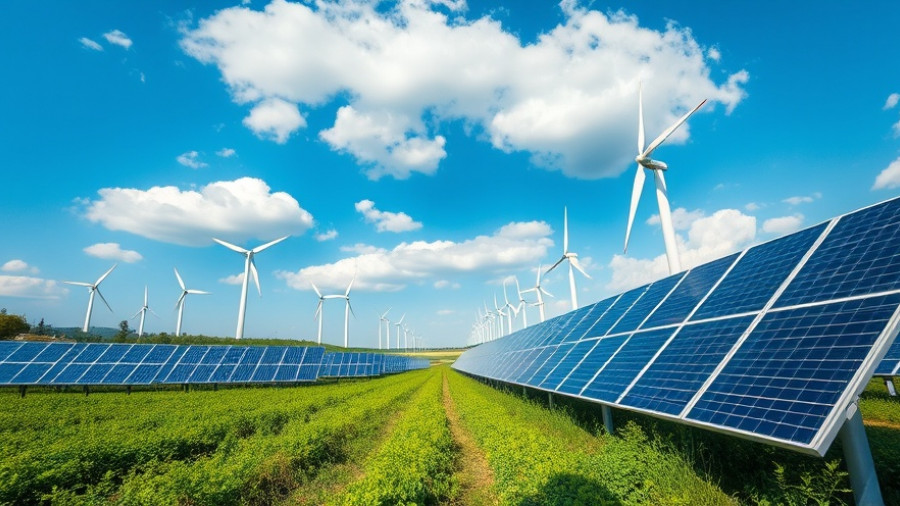
A Record Year for Renewable Energy: Progress But Not Enough
The recent report from global renewable energy organizations showcases an impressive milestone: an addition of 582 gigawatts of renewable energy capacity globally in 2024. However, despite this record growth, the world remains significantly short of the ambitious goal set at COP28 in Dubai, which aims to triple renewable energy capacity by 2030. To meet this target, annual growth of 16.6% is necessary, indicating that more robust strategies and actions are urgently needed.
Current Shortcomings and Future Needs
By the end of 2024, the cumulative global renewable energy capacity reached 4,443 GW, while the target stands at a staggering 11,174 GW. This gap urges policymakers and industry leaders to reflect on the paths currently being taken. Leaders in the renewable sector, such as Francesco La Camera, Director-General of the International Renewable Energy Agency (IRENA), suggest the target is still achievable. Estimates indicate that about 750 gigawatts could be added in 2025, which would shorten the gap but still necessitates immediate action.
Investment and Policy Adjustments are Imperative
A holistic approach is crucial, with emphasis on developing policy frameworks that foster renewable energy investment. Policies that encompass financial incentives and facilitate workforce reskilling are essential. In preparation for COP30 in Brazil, it is vital to enhance supply chains and upgrade power grid infrastructure to support the accelerated pace of renewable energy integration.
Comparative Global Trends in Renewable Energy
A report from Ember noted that renewable energy sources have now generated more electricity than coal during the first half of 2025. This remarkable achievement illustrates the shifting landscape in energy production and highlights the growing effectiveness of renewable technologies. However, external factors, such as changing tax credits for solar and wind projects in the U.S., may present challenges for ongoing investments in these alternatives.
Understanding the Long-Term Vision for Renewable Growth
Looking forward, it is evident that the renewable energy sector is positioned to lead the global transition to cleaner energy sources. The shift from fossil fuels to renewables is not merely a trend but has become an economic imperative. As La Camera notes, "The renewables market has made this choice; it is the cheapest way to produce electricity.” This sentiment emphasizes the need for structural changes in the energy market—ensuring renewable policies are at the forefront of national objectives, particularly in light of the dire warnings from climate researchers about the accelerating impacts of global warming.
Engaging Local Communities and Creating Opportunities
Furthermore, it is crucial for governments to engage local communities and industries in this transition. Policies should be established that encourage job creation in the renewable sector, ensuring that the economic benefits are distributed equitably—especially among disadvantaged communities. Achieving these goals not only aligns with climate targets but also enhances local economies and builds resilience against future climate impacts.
Conclusion: A Call for Continued Action
The journey toward tripling renewable energy installations by 2030 is undeniably challenging, but not impossible. As the world looks forward to the upcoming COP30 climate talks, the collective emphasis must be on collaboration, robust investment strategies, and inclusive decision-making. The choices made today will shape the future of energy and climate resilience. Let us act decisively, informed by facts and united in purpose.
 Add Row
Add Row  Add
Add 




Write A Comment